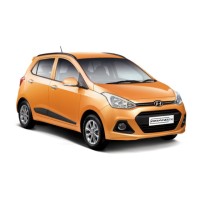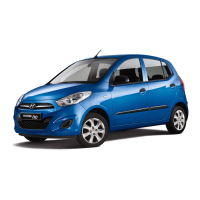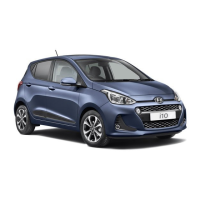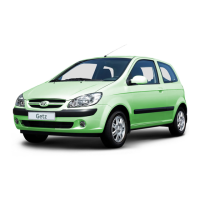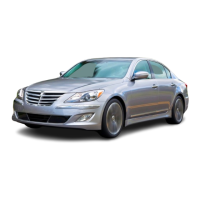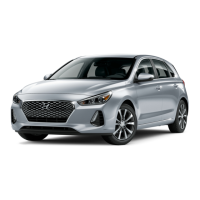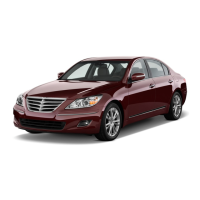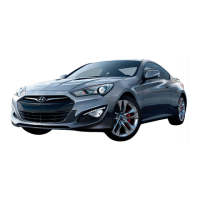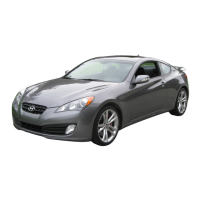6-43
06
Don’t let your parking brake freeze
Under some conditions, your parking
brake can freeze in the engaged
position. This is most likely to happen
when there is an accumulation of snow
or ice around or near the rear brakes or
if the brakes are wet. If there is a risk
the parking brake may freeze, apply
it only temporarily while you put the
shift lever in N (for Automated Manual
Transmission) or in the first or reverse
gear (for Manual Transmission) and
block the rear wheels so the vehicle
cannot roll. Then release the parking
brake.
Don’t let ice and snow accumulate
underneath
Under some conditions, snow and ice
can build up under the fenders and
interfere with the steering. When driving
in severe winter conditions where this
may happen, you should periodically
check underneath the car to be sure the
movement of the front wheels and the
steering components is not obstructed.
Carry emergency equipment
Depending on the severity of the
weather, you should carry appropriate
emergency equipment. Some of the
items you may want to carry include tire
chains, tow straps or chains, flashlight,
emergency flares, sand, shovel, jumper
cables, window scraper, gloves, ground
cloth, coveralls, blanket, etc.
Don’t place foreign objects
or materials in the engine
compartment
Placement of foreign objects or
materials which prevent cooling of the
engine, in the engine compartment,
may cause a failure or combustion. The
manufacturer is not responsible for the
damage caused by such placement.
Drive your vehicle when water
vapor condenses and accumulates
inside the exhaust pipes
When the vehicle is stopped for a
long time in winter while the engine is
running, water vapor may condense and
accumulate inside the exhaust pipes.
Water in the exhaust pipes may cause
noise, etc., but it is drained driving at
medium to high speed.

